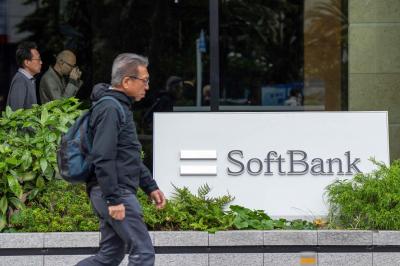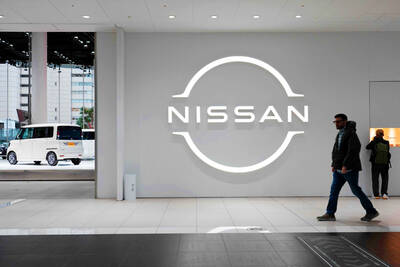Gasoline and oil futures jumped on Friday on continued concerns that domestic refineries aren't producing enough gas to meet peak summer driving demand.
"The market's realizing that we're just not seeing enough of a supply build," said Jim Ritterbusch, president of Ritterbusch & Associates in Galena, Illinois.
Retail prices, on the other hand, retreated further from last week's record highs. The national average price of a gallon of gas fell to US$3.184 a gallon (US$0.84 a liter), down US$0.007 overnight and off US$0.043 since the May 24 record of US$3.227.
But gasoline futures for July delivery rose US$0.0414 a gallon to settle at US$2.2446 on the New York Mercantile Exchange, while July light, sweet crude futures jumped US$1.07 to settle at US$65.08 a barrel.
Brent crude contract for July rose US$0.87 to US$69.07 a barrel on the ICE Futures exchange in London.
The increase in gasoline futures prices came despite Thursday's US Energy Department inventory report, which showed that gas supplies grew by 1.3 million barrels in the week ended May 25. Many analysts said investors largely shrugged off the increase, unconvinced that inventories are growing fast enough to meet demand.
"The overall 1.3 million barrel build in gasoline inventories this week is pretty lackluster by seasonal standards and when one factors in that 800,000 barrels of the build happened on the West Coast, it looks very much below par," wrote Barclays Capital analyst Kevin Norrish in a research note. "The East Coast is starting to look very tight indeed."
In other NYMEX trading, natural gas futures for July fell US$0.057 to settle at US$7.878 per 1,000 cubic feet (US$0.2782 per cubic meter), while heating oil futures rose US$0.0397 to settle at US$1.9228 a gallon.
The inventory report also showed that domestic oil inventories fell by 2 million barrels, when analysts had been expecting an increase of about 300,000 barrels. It was the first draw in crude oil inventories in six weeks.
Despite the increase in gasoline supplies, the US Energy Department report showed that refinery utilization was flat last week, at 91.1 percent of production capacity, compared to the previous week.
The increase in gas supplies comes mostly from imports, analysts said.
"An apparent recovery in domestic gasoline output is illusory," wrote Antoine Halff, an analyst at Fimat USA, in a research note. "Refinery crude runs actually fell on the week and a headline gain in gasoline yields is entirely attributable to a surge in imports, which soared to the third highest weekly average ever."
Refineries aren't producing more gasoline because they continue to have problems.
Gasoline prices rose steadily through the spring as domestic refiners reported an unusually high number of outages, and this week has brought news of another round of glitches.
There were reports of problems at a ConocoPhillips refinery in Sweeny, Texas, a Lyondell Chemical Co refinery in Houston and a pipeline operated by Colonial Pipeline.
While minor, any word of new supply problems sends jitters through the markets, Ritterbusch said.
"It did remind the market that we're not out of the woods," Ritterbusch said.
Oil prices were also supported by news of continued unrest in Nigeria, a major US supplier, where gunmen killed two police officers and kidnapped three Asian workers from a residential compound in the lawless southern oil region.

PERSISTENT RUMORS: Nvidia’s CEO said the firm is not in talks to sell AI chips to China, but he would welcome a change in US policy barring the activity Nvidia Corp CEO Jensen Huang (黃仁勳) said his company is not in discussions to sell its Blackwell artificial intelligence (AI) chips to Chinese firms, waving off speculation it is trying to engineer a return to the world’s largest semiconductor market. Huang, who arrived in Taiwan yesterday ahead of meetings with longtime partner Taiwan Semiconductor Manufacturing Co (TSMC, 台積電), took the opportunity to clarify recent comments about the US-China AI race. The Nvidia head caused a stir in an interview this week with the Financial Times, in which he was quoted as saying “China will win” the AI race. Huang yesterday said

Japanese technology giant Softbank Group Corp said Tuesday it has sold its stake in Nvidia Corp, raising US$5.8 billion to pour into other investments. It also reported its profit nearly tripled in the first half of this fiscal year from a year earlier. Tokyo-based Softbank said it sold the stake in Silicon Vally-based Nvidia last month, a move that reflects its shift in focus to OpenAI, owner of the artificial intelligence (AI) chatbot ChatGPT. Softbank reported its profit in the April-to-September period soared to about 2.5 trillion yen (about US$13 billion). Its sales for the six month period rose 7.7 percent year-on-year

Nissan Motor Co has agreed to sell its global headquarters in Yokohama for ¥97 billion (US$630 million) to a group sponsored by Taiwanese autoparts maker Minth Group (敏實集團), as the struggling automaker seeks to shore up its financial position. The acquisition is led by a special purchase company managed by KJR Management Ltd, a Japanese real-estate unit of private equity giant KKR & Co, people familiar with the matter said. KJR said it would act as asset manager together with Mizuho Real Estate Management Co. Nissan is undergoing a broad cost-cutting campaign by eliminating jobs and shuttering plants as it grapples

MORE WEIGHT: The national weighting was raised in one index while holding steady in two others, while several companies rose or fell in prominence MSCI Inc, a global index provider, has raised Taiwan’s weighting in one of its major indices and left the country’s weighting unchanged in two other indices after a regular index review. In a statement released on Thursday, MSCI said it has upgraded Taiwan’s weighting in the MSCI All-Country World Index by 0.02 percentage points to 2.25 percent, while maintaining the weighting in the MSCI Emerging Markets Index, the most closely watched by foreign institutional investors, at 20.46 percent. Additionally, the index provider has left Taiwan’s weighting in the MSCI All-Country Asia ex-Japan Index unchanged at 23.15 percent. The latest index adjustments are to